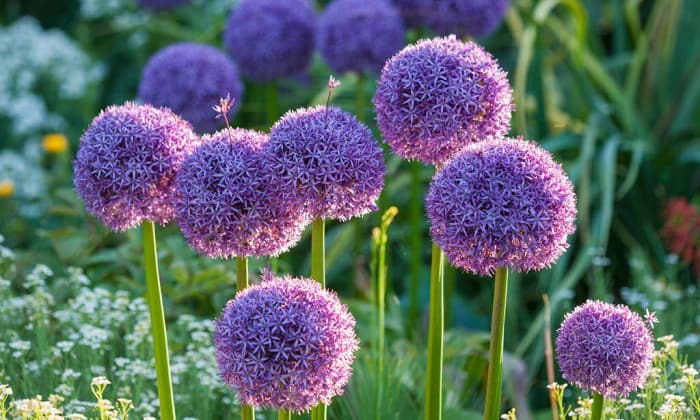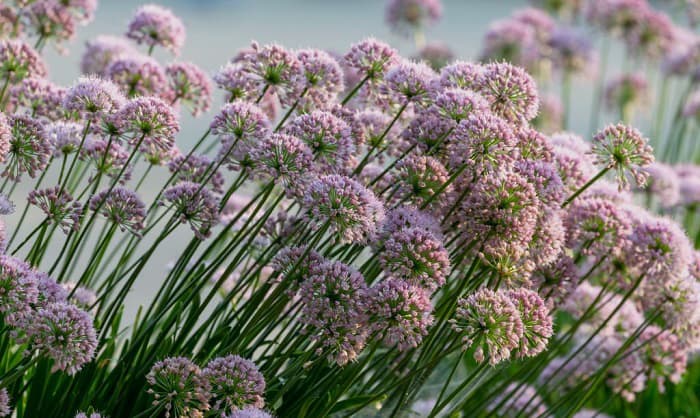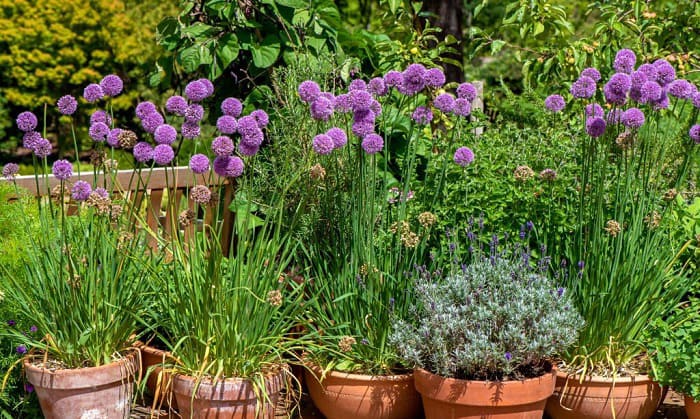Allium bulbs belong to the same family as onions and garlic, but they are flowers instead of vegetables. And like the crops we often use in cooking, these ornamentals can also be grown in gardens.
But when to plant allium bulbs? In general, the best time to do this task is during fall, though spring is also possible. Read on for more details.
Table of Contents
Allium Bulbs When to Plant?
1. In fall and spring
As stated above, the best time to plant allium bulbs is during fall. In detail, you should grow them between September and November.
There are two reasons why this period is optimal.
- First, these flowers will actually thrive under moderately low temperatures (around 60 degrees Fahrenheit or so).
- Second, if you’re growing allium plants for the first time, doing so in autumn rather than spring will produce bigger blooms during the first year. This fact is important if you want pretty flowers as soon as possible.
That said, if you cannot wait until fall, there’s no reason not to plant allium bulbs in spring. They will still blossom in summer under proper care.
Notes:
- Although allium bulbs are cold hardy, it’s important to avoid starting them in freezing temperatures.
In fact, grow them two weeks before any forecasted freeze. Otherwise, the plants won’t become strong early enough to endure the arrival of winter.
- Interestingly, frost and freeze are different, though you may have heard them used interchangeably.
Frost dates are when temperatures hit 36 degrees and below. On the other hand, freeze dates are when the weather is 32 degrees or colder.
Furthermore, the first frost and freeze often don’t coincide. Knowing the freeze date will help you decide when should allium bulbs be planted at the latest.
For example, the average first fall frost in Memphis, Tennessee is November 3, but its first fall freeze is November 12.
Similarly, the first freeze in Cleveland, Ohio is October 28, but its first frost is October 14.
You can look up the freeze dates for your region on the website of the National Weather Service.
2. When the soil has the right pH, drainage, and temperature
Before planting allium bulbs, make sure the ground has a pH of 5.5 to 6.5. If the acidity level is not right, you can adjust the soil with peat moss or compost.
In addition, drainage is necessary for these flowers to thrive. Hence, if you grow alliums in containers, make sure the pots have holes (about 10 cm or 4 inches deep) to release moisture.
Last but not least, it’s wise to plant this flora when the soil is 55 degrees Fahrenheit. Such practice will ensure the plant shoots develop as well as possible.
Allium Growing Zones
Before you plant alliums, it’s best to check the USDA zone you’re living in. In general, these plants will do well in zones 4 to 10.
However, it’s important to note that not all varieties of ornamental onions have this wide of a range. Therefore, you should check the description of your seed before planting.
- For example, the Purple Sensation allium will thrive in zones 4 to 9, so if you live in zone 10, you may have to pass on planting it during the hot season.
- Similarly, the Globemaster cultivar is suitable for zones 5 to 8, and it’s best to find other varieties if you live outside these regions.
To find your hardiness zone, go to planthardiness.ars.usda.gov and look at the map for your state. Meanwhile, here are the growing zones for alliums. I’ve listed some places in each area for easier reference.
1. Zone 4
Most of South Dakota (such as Butte, Fall River, Sully, and Kingsbury)
Vast areas of Wyoming (such as Fremont, Natrona, and Niobrara)
Lyon, Renville, and Goodhue in Minnesota
2. Zone 5
Douglas, Washington, and Crowley in Colorado
Hayes, Kearney, and York in Nebraska
Henry, McLean, and Iroquois in Illinois
3. Zone 6
Jersey, Shelby, and Clay in Illinois
The majority of Ohio, except for some small parts of Williams, Darke, Preble, Knox, etc
Sussex, Warren, and Somerset in New Jersey
4. Zone 7
Salem, Cumberland, Burlington, and Monmouth in New Jersey
Stoddard, Scott, and New Madrid in Missouri
Beckham, Logan, and Mayes in Oklahoma
5. Zone 8
Wilmington, Fayetteville, and Greenville in North Carolina
College Park, Athens, and Macon in Georgia
Abilene, Fort Worth, and Dallas in East Texas
Related: Let’s see the popular vegetables grown in North Carolina and best time to plant them.
6. Zone 9
Laredo, Houston, and Beaumont in East Texas
Clearwater, Tampa, and Orlando in Florida
Eureka, Santa Rosa, and Marysville in Northern California
Related: Best time to plant a vegetable garden in texas
7. Zone 10
Fort Myers, Naples, and Palm Beach in Florida
Yuma in Arizona
Caring for Allium Bulbs – Things You Should Know
- Alliums need full sunlight or at least, there should only be some slight shade above them.
- These plants need moderate watering (around once every three to five days). It’s important to not soak their soil; otherwise, these ornamentals will rot.
- You should also deter snails and slugs from your garden, as these creatures will ruin your alliums. To do so, sprinkle coffee grounds or Diatomaceous Earth around your flowers. Alternatively, use a beer trap.
- Whether you grow allium bulbs in pots or in the ground, there should be 4 inches of depth from the alliums to the top of the soil.
Conclusion
When to plant allium bulbs? You can do so in spring and fall, when the weather isn’t freezing and the soil has the right conditions to support vegetation.
At the same time, picking the ornamentals suitable for your hardiness zone is important, as is giving alliums appropriate care.
Please share this article if you found it helpful. Thanks for reading.

Hi, I am William – Floridayards’ digital content creator. My job is to find answers to all your concerns with thorough research and our team’s expert advice. I will also bring you honest reviews on the best products and equipment for raising your beautiful garden. Please look forward to our work!













